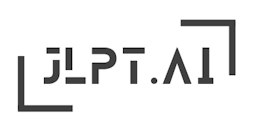

N3
音読み:soku
訓読み:taba
ソクsoku
たばtaba
Bundle, bunch, to tie
Imagine a bundle of sticks tied together tightly with a rope. This bundle represents the meaning of '束', symbolizing the act of bundling or tying things together.
The kanji '束' is a moderately frequent character appearing in JLPT materials, particularly at the N3 and higher levels. Its usage is often extended to related vocabulary and expressions, making it important for the comprehension of reading passages and the acquisition of vocabulary knowledge.
花束を彼女にプレゼントしました。
I gave her a bouquet of flowers as a present.
はなたばをかのじょにぷれぜんとしました。
hanataba o kanojo ni purezento shimashita.
彼は私の手を束ねて離さなかった。
He held my hand tightly and didn't let go.
かれはわたしのてをたばねてはなさなかった。
kare wa watashi no te o tabanete hanasanakatta.
紙の束が倒れてしまいました。
The stack of papers fell over.
かみのたばがたおれてしまいました。
kami no taba ga taorete shimaimashita.